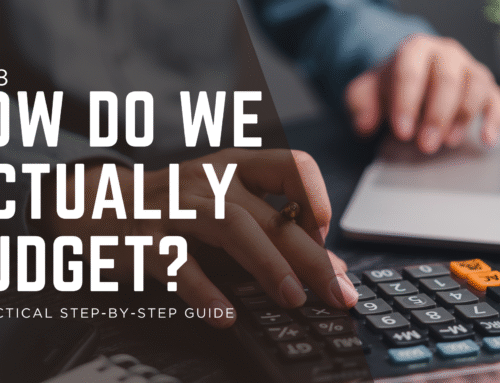
📝 Quick Recap
Last week we covered calculating your after-tax income and allocating 50% to needs. This week, we complete the picture with the remaining 30% for wants and 20% for savings and debt repayment.
50% Needs
Essential expenses
30% Wants
Lifestyle choices
20% Savings
Future security
Limit Your “Wants” to 30 Percent
This sounds great on the surface. Can you put 30 percent of your money toward your wants? Hello, shoes, weekend trip to Tobago, liming every Friday?
🚫 Not So Fast!
Remember how strict we were with the definition of a “need”? Your “wants” don’t include extravagances. They include the basic niceties of life that you enjoy, like that unlimited text messaging plan, your home cable bill, and cosmetic (not mechanical) repairs to your car.
Common “Wants” Examples:
- Dining out and entertainment
- Streaming services and cable TV
- Hobbies and leisure activities
- Non-essential clothing and accessories
- Vacations and travel
Spend 20 Percent on Savings and Debt Repayments
Now about the extra $200 you pay on that credit card each month. That’s neither a want nor a need. It’s the “20” in the 50/30/20 rule. It’s in a class all its own.
💰 The Wealth-Building Category
You should spend at least 20 percent of your after-tax income repaying debts and saving money in your emergency fund and your retirement accounts.
Understanding Debt Allocation:
💳 Credit Card Debt
If you carry a credit card balance, the minimum payment is a “need” and it counts toward the 50 percent. Anything extra is an additional debt repayment, which goes toward this 20 percent category.
🏠 Mortgage & Car Loans
If you carry a mortgage or a car loan, the minimum payment is a “need” and any extra payment count toward “savings and debt repayment”.
An Example of the 50/30/20 Plan
📊 Monthly Budget Example
Total Take-Home Pay: $3,500 per month
50% Needs: $1,750
Using the 50-30-20 rule, you can spend no more than $1,750 on your needs per month. You probably can’t afford a $1,500-a-month rent or mortgage payment, at least not unless your utilities, car payment, minimum credit card payments, insurance premiums, and other necessities of life don’t exceed $250 a month.
🏡 Already Locked Into High Housing Costs?
If you already own your home or you’re locked into a lease, you’re pretty much stuck with that $1,500 payment. Consider:
- Relocating when your lease expires
- Shopping for more affordable insurance
- Transferring credit card balances to lower interest rates
- Reducing other “needs” where possible
30% Wants: $1,050
You can spend $1,050 a month on your “wants” based on that $3,500 you’re bringing home each month. You might consider doing without a few things and shifting some of this money to your “needs” column if you’re coming up short there—not necessarily indefinitely but until you can get your needs down to a more manageable level.
20% Savings & Debt: $700
Remember, you still need 20 percent left over so you can save and pay down your debts according to the 50/30/20 plan.
Now you have $700 left, that last 20 percent. You know what to do with it. Pay down on debt, save for an emergency, and plan for your future.
Recommended 20% Allocation:
- Emergency Fund: 5-10% until you have 3-6 months of expenses
- Retirement Accounts: 10-15% of income
- Extra Debt Payments: Remaining percentage
✅ You’ve Mastered the 50/30/20 Rule!
You now have a complete framework for managing your finances. The 50/30/20 rule provides a balanced approach that covers your present needs while building future security.
“A wealthy person is simply someone who has learned how to make money when they’re not working.” – Robert Kiyosaki
🔗 Related Content
Missed the first part? Read Part 1: Calculating Your After-Tax Income and Needs to get the complete picture.







